The IPNDV met in Geneva, Switzerland in December 2024 for its final working meeting of the year. The four-day program saw the working groups continue to make progress on their planned Phase III products and reports. In addition, the Partners heard from the task force working to develop an education program for new participants to speed their preparations to join and contribute to the work of the working groups. The working groups conducted several tabletop exercises exploring potential diversion pathways within the Phase III Limitations and Reductions scenarios. In addition, the Partners jointly conducted a series of small group discussions addressing verification requirements for nuclear components after warhead dismantlement.
Working Group Summaries
Limitations Working Group (LWG)
The Limitations Working Group continued to make progress on its planned end of phase products through a series of focused sessions and collaborative discussions. A highlight was the “Verification by Design” exercise, which tasked participants with conceptualizing and designing a purpose-built facility dedicated to the dismantlement of nuclear warheads under the LWG scenario. The exercise proposed that integrated verification mechanisms be incorporated into the facility’s design to enhance verification and treaty compliance while maintaining safety and security requirements. Ideas generated included employing a one-way material flow, creating transparent zones for enhanced visibility, centralizing equipment rooms, and rightsizing doors to correspond with the size and type of materials moving through the dismantlement process at each applicable stage. Recognizing the complexities inherent in building dedicated facilities solely to support treaty reductions, the exercise was intended to identify features that could be retrofitted into existing facilities which would result in dismantlement facilities ready to support treaty implementation faster than by requiring construction of entirely new infrastructure. Later in the week, the group presented its findings in a joint session with the Reductions Working Group (RWG), fostering cross-group collaboration.
The LWG also worked on a “Portal Monitoring Considerations” concept, creating a detailed table to address scenarios related to verifying treaty-accountable items, detecting undeclared nuclear material, and ensuring continuity of knowledge during inspections. These discussions highlighted the technical and operational challenges of using portal monitors, including false positives, host sensitivities, and portal placement strategies. The LWG then collaborated with the Technology Track (TT) to refine technical objectives and options and weighed these technologies against operational considerations like cost, maintenance, and potential exposure of sensitive information.
Looking ahead, the LWG plans to capture results from a previous exercise on diversionary pathways by the next working meeting in June 2025. Additionally, the group will develop a Concept of Operations for the dismantlement process, incorporating findings and lessons learned from the “Verification by Design” exercise to outline practical applications for real-world verification challenges.
Reductions Working Group (RWG)
The Reductions Working Group focused on two new mini-exercises, “Inspection at a Deployment Site: Deterring Diversion of Nuclear Warheads” and “Inspection at a Dismantlement Site: Deterring Diversion of Nuclear Warheads”. Building on mini-exercises from the previous working meeting in June, 2024, two different cases were explored under each of the exercises that challenged participants to identify a full range of potential diversion pathways, and configure cost-effective Processes, Procedures, Technologies and Techniques (PPTT) to address those pathways, while identifying gaps in the identified PPTT options. Several key takeaways will lead to refined, robust PPTTs, including:
- In principle, diversion pathways can be identified; in practice, the practicality and credibility of pathways varies.
- The utility of diversion ultimately requires the means to mate a diverted warhead with a means of delivery.
- Deployment site diversion during transportation is both the most likely and most challenging pathway.
- PPTT approaches using portal and perimeter monitoring with tags and seals are potential means to increase the risk of detection and build confidence in verification.
- Dismantlement site diversion pathways may differ slightly between limitations and reductions treaty scenarios but use of a dedicated dismantlement area (e.g. plant-within-a-plant design) – benefit both situations.
- Additional PPTT to consider include use of a specialized “smart” tagging system (i.e. “buddy tags”) in which a sensor inside a container communicates with a reader on the outside of the container to confirm the presence of a nuclear warhead within, and laser optic tamper indication.
A joint meeting of the LWG and RWG provided an opportunity to share findings of the “Verification by Design” and the deployment/dismantlement diversion mini-exercises, with inter-group collaboration that informed significant differences in approaches to monitoring and inspection activities with each. The RWG wrapped up with plans to develop another set of mini-exercises on transportation for the working meeting set for June 2025. To prepare for these mini-exercises, members are encouraged to review and experiment with the influence criteria 8-vector diagrams presented in the CWG using the Ipindovia scenario to become familiar with their use.
Concepts Working Group (CWG)
The Concepts Working Group focused on discussions related to its end of phase products: papers on verification strategies, confidence in verification, and Step 14 verification measures, including what constitutes “irreversibility”. The group co-chaired a workshop with the TT on Step 14, focused on comparing it to Step 8 and the associated PPTT exercised in the Franco-German NuDiVe exercises. Finally, group members agreed to have an additional virtual meeting with the TT in April to discuss confidence and how it can potentially be quantified.
Partners began the week with a presentation on a Bayesian analysis utilizing 8-vector diagrams to develop weighting within the PPTTs, providing a new avenue for analysis. Participants provided an update on logistics with verification strategies, which generated an in-depth discussion and general agreement on a draft paper by March 2025. Other group members provided updates on an irreversibility food-for-thought paper and a presentation on how bias may affect inspections. This facilitated working group members in completing a bias survey, which will contribute to later research to be presented to the Partners. The sub-group addressing confidence in verification provided feedback on the initial draft of a paper, aided by a presentation on articles about compliance within international nonproliferation regimes that may be informative to a future disarmament treaty.
Technology Track (TT)
The Technology Track focused on collaboration with the other working groups. For instance, the Tech Track provided technical options and considerations for the LWG Portal Monitoring paper and plans to complete an assessment of different applications of portal monitoring in early 2025. The TT also examined questions from the RWG focused on diversion pathways. Finally, the TT co-chaired a workshop with the CWG addressing Step 14 verification, focused on how it compares to Step 8 and previous NuDiVe exercises.
Group members also provided updates on respective research, including “Preliminary Results for Active Neutron Interrogation (ANI) Tests and Comparison with Passive Gamma-ray Technique for Nuclear Disarmament Verification Applications” by Canadian Nuclear Laboratories, Portal Monitoring techniques by Hungary, technical approaches to Step 14 from Finland, and analysis from the Belgian BeCamp2 campaign by American and Swiss colleagues.



